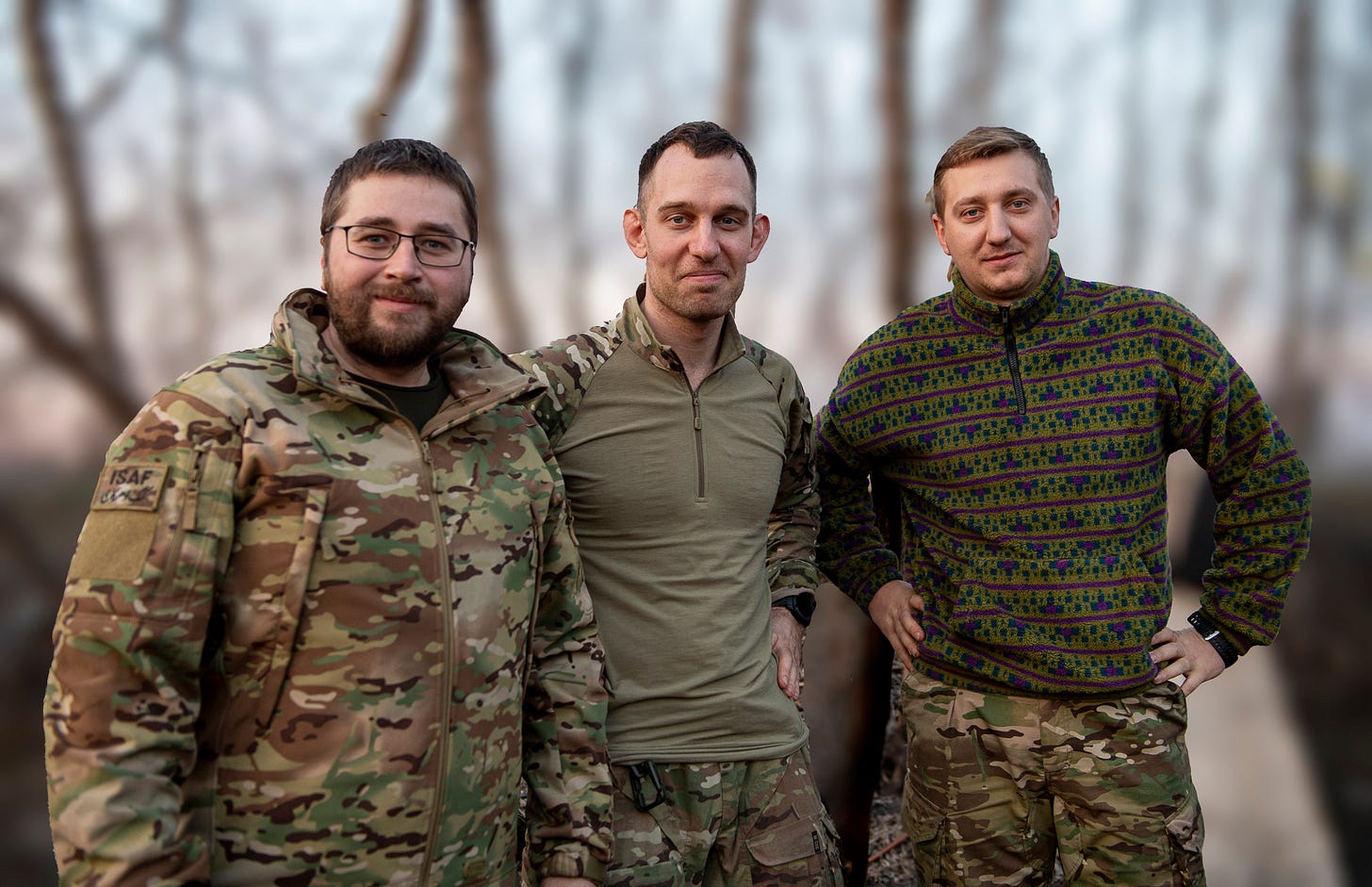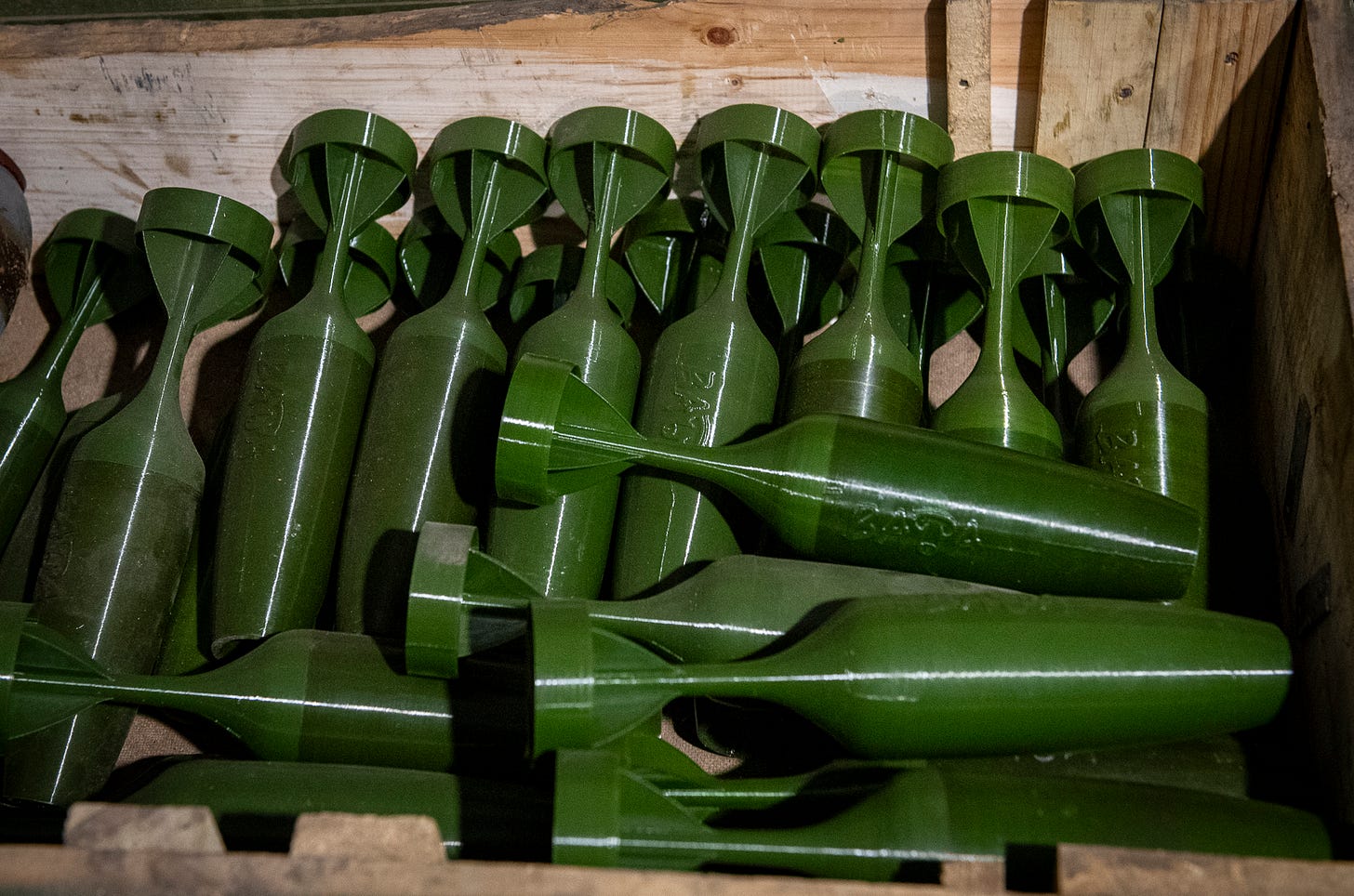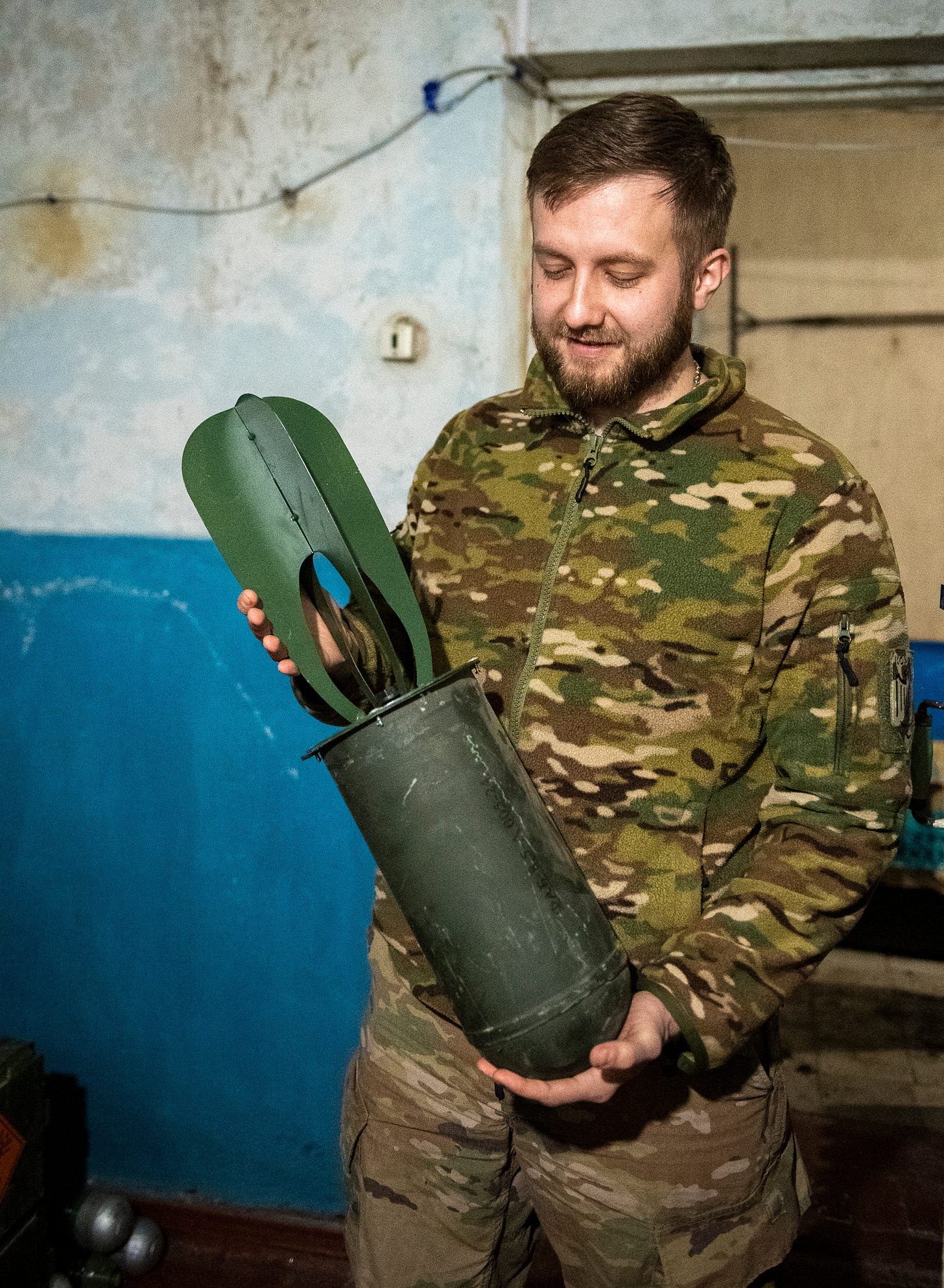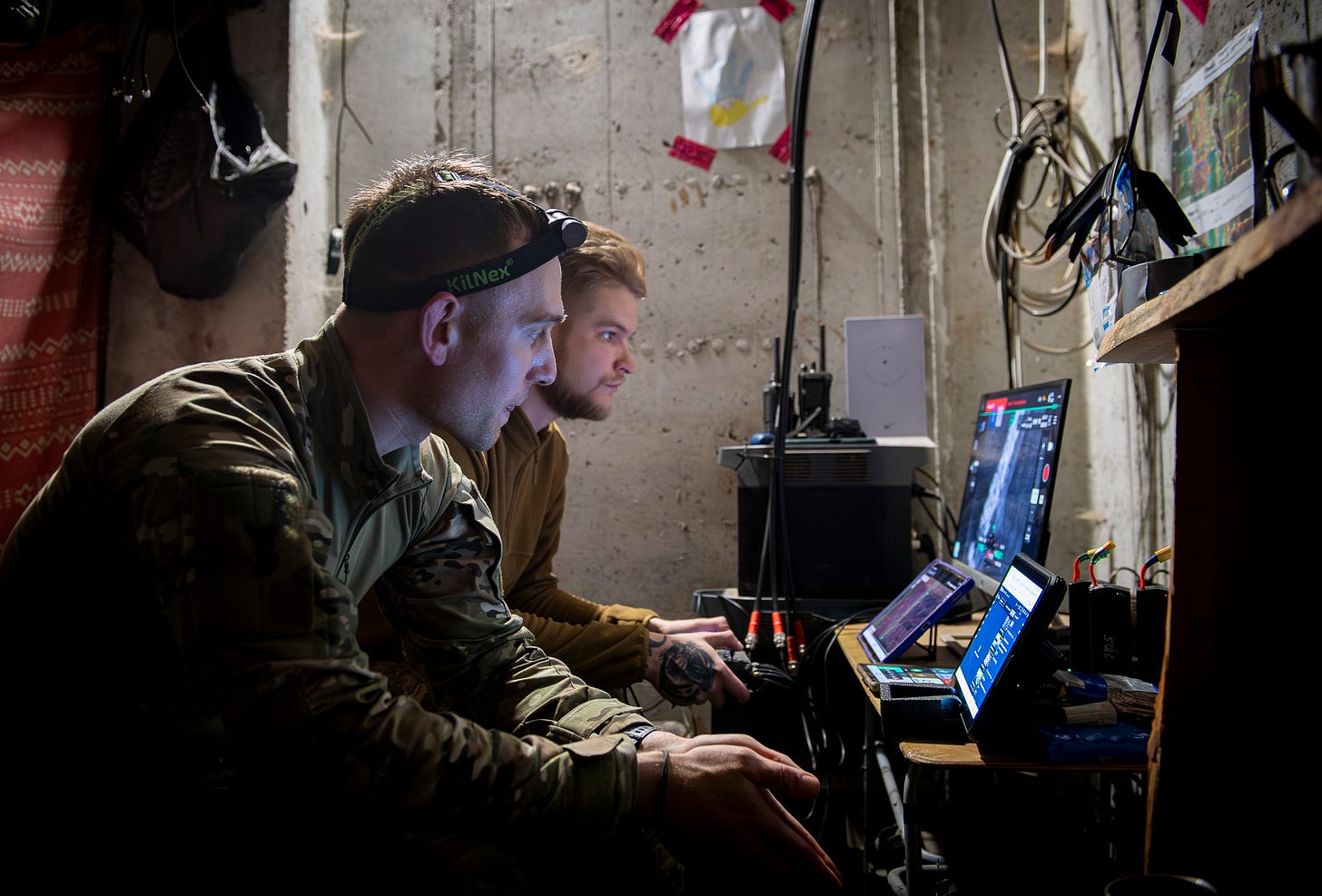Flying with the KONDORS
Paul Conroy reports from the frontline on Ukraine's advances in drone technology that are shaping modern warfare
In Ukraine, where the mere mention of Trump now prompts a wry smirk, the war grinds relentlessly on into its fourth year. With peace talks stalled and the Trump administration veering towards a pro-Putin stance, I sought to understand how the American threat to withdraw military aid impacted the battlefield. To uncover these dynamics and how Ukraine’s advances in drone technology were shaping modern warfare, I joined the 1st Presidential Brigade's KONDOR unit, an elite drone team tasked with defending a critical section of the Kup’yans’k frontline in Ukraine’s Eastern region.
To the sounds of Ice Cube’s ‘It Was A Great Day’ blasting from the speakers, Andrii, a young KONDOR officer with an easy smile, navigated a winding series of country lanes and off-road tracks. An array of antennas housed in domes on the roof of our Land Cruiser actively jams the frequencies controlling Russian FPV (First Person View) drones, reducing, but never eliminating, the risk of a lethal attack.
We arrive at an unremarkable two-story white brick building in the heart of the Kup’yans’k countryside. Surrounding it are a few cottages where green fatigues hang on washing lines under the warm spring sunshine. In this unexpected pastoral scene, a soldier repairs a camouflaged Land Rover while a ginger cat approaches, seeking affection—a rare moment of calm against a backdrop of war. Sensing my confusion, Andrii smiles and asks if I want to see inside. “You might want to grab your camera,” he says cryptically.
Inside, the building exudes Soviet-era utilitarian chic. Whitewashed walls and bare lightbulbs hanging from ancient wiring barely illuminate the gloom. Andrii pushed open the first door, and we entered. A rack of rusting metal shelving bulged under thousands of deadly-looking munitions stacked in neat rows. Holding up a modified grenade, Andrii detailed its transformation: “We added 3D-printed fins to these launcher grenades, optimising them for drones to destroy enemy positions and troops.”
He then opened a green ammunition crate, one of dozens stacked in the corner, and pulled out a monstrous 5 kg, cylindrical munition with attached fins. “This is dropped from a Baba Yaga,” the generic term for a legendary Ukrainian-built, heavy-lift drone that strikes terror into the Russian invaders. “It can carry four of these–20kg in all,” said Andrii, carefully placing it back in the crate. To those unfamiliar with battlefield weapons, be assured that 20kg of high-explosive fragmentation warhead delivered with pinpoint accuracy represents formidable firepower.
Andrii reveals a mind-numbing array of deadly devices to overcome various battlefield obstacles. From anti-personnel to armour piercing, there were no scenarios the weapons designers had not considered – and they were making them in industrial quantities. The warehouse brimmed with thousands of rounds of Ukrainian-produced weapons.
In the construction room, Max, in shorts and a sweatshirt, looked up with a smile as he packed thousands of steel ball bearings into a 3D-printed tray. Once complete, the explosives, shrouded in deadly shrapnel, will be fitted onto the belly of a Ukrainian-built fixed-wing UAV, making a lethal flying bomb.
Outside in the sunshine, my fear of drones, which was already high, had escalated to the level of terror. I asked Andrii about Trump withholding military aid. “Two years ago, if the United States had stopped sending weapons, we would have been fucked,” he told me. “Nowadays, everything you see inside is designed and manufactured here in Ukraine. We are at the forefront of drone technology. Ukraine defeated the Russian navy without having any battleships,” he tells me with an impish grin, referring to the Ukrainian ‘Sea Baby’, amphibious drones that sent Russia’s Black Sea fleet into hiding.
When asked about foreign drone systems, he smiled sympathetically. “We tested many European and American drones on the frontline, and they all fell out of the sky before reaching the Russians. Yes, we need air defence missiles to protect the cities, but we are becoming self-sufficient on the battlefield.”
At 5pm, I was bundled into another military pickup, and we headed to a frontline position. The sun hung low in the sky, and trails of wood smoke drifted from the homes of the few civilians remaining in the area. In the fields, a woman sowed seeds into a small patch of ploughed soil; her peace shattered when a low-loader transporting a tank belched clouds of diesel exhaust into the air as it shifted gears. During a Sunday afternoon visit, a family passed a tea towel-covered pan to an old grandmother, who barely glanced up when a rocket detonated nearby.
As we approached the Oskil River, even these rare signs of life disappeared, leaving only abandoned villages and empty fields accompanied by the sound of heavy artillery and rocket fire. The only movement now consisted of military trucks equipped with the familiar row of anti-drone aerials, racing at breakneck speeds between positions.
In the centre of a deserted village, we took shelter beneath the sparse cover of trees, donned full-body armour and helmets, and awaited the signal to move forward to the drone position. When the message arrived, everything happened at speed. We piled into the truck, activated all the drone jammers, and the driver hit the throttle, weaving through the numerous potholes and craters with incredible precision. The soldiers in front scanned the horizon for drones while the sounds of incoming and outgoing artillery fire cut across the straining V8 engine.
Fifteen minutes later, the truck stopped in a cloud of thick dust. Before I knew it, my kit was thrust into my hand, and a soldier emerged from a copse by the roadside. A few jerry cans of diesel were passed from the pickup before it performed a screeching three-point turn and sped back on its return journey.
“Follow me,” said the soldier, grabbing the fuel cans and disappearing into a cluster of splintered trees. We ran twenty metres across a shell-scarred field, and I followed him into a deep trench that zigzagged through the black earth. Pulling aside a cam net, he vanished into a hole cut into the side of the trench, and I stumbled after him down muddy, narrow steps. We passed through two more layers of netting and a plastic sheet designed to prevent Russian FPV drones from entering. At the bottom, he opened a heavy metal door, and we entered the bunker.
The contrast between the damp soil of the trench and the gloomy entrance couldn’t have been starker. The concrete bunker was a high-tech haven measuring no more than three by two metres. A computer screen and two tablets displayed maps and the live feed of a Mavic drone hovering silently above Russian positions, bathing the pilot, Ivan, in a pale blue light.
George, 32, with whom I had navigated the trench, smiled as he took my armour and helmet and stacked them in the bunker's claustrophobic confines. He spoke perfect English. “Please sit,” he gestured toward a wooden kitchen chair that would be my home for the next twenty-four hours. George explained their shift system. “We do twelve hours on and twelve off.” Catching my quizzical look, he laughed and gestured behind him. “We have two other pilots sleeping in the back: Roman, our commander, and Vitali.”
Keep reading with a 7-day free trial
Subscribe to Byline Supplement to keep reading this post and get 7 days of free access to the full post archives.







